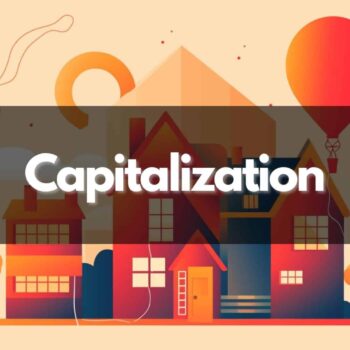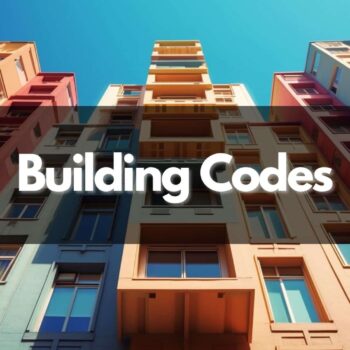Variable interest rate refers to an interest rate that varies according to market changes. To understand the overall cost of the loan, it is essential to learn how changing rates can affect the payments.
Interest rate plays a vital role in determining the cost of the loan, and real estate students must understand the options available. As a real estate teacher, my job is to make it easier for real estate students to understand various real estate terms. Any confusion regarding the types of interest rates can result in inaccurate loan cost estimates. Thus, it is crucial to understand the variable interest rate definition fully.
I’ll use examples in this post to help you understand the variable interest rate definition. Let’s move on to discover this detailed yet interesting concept.
What Is a Variable Interest Rate?
A variable interest rate is a rate that increases or decreases according to changing market rates.
When a person takes out a loan, they can choose between two main rates: a fixed interest rate or a variable interest rate. With a fixed interest rate, the interest and monthly payments on the loan remain fixed till the loan matures. However, with the variable interest rate, the interest changes according to the benchmark rate, but the payments remain fixed. With variable interest rates, the borrower or the lender has no control over the rates.
The payment is locked in at the time of the loan agreement for a variable interest rate, but the interest rate isn’t. This is different from the fixed interest rate, where the interest and payments are locked in before the loan agreement. On the other hand, in an adjustable rate, the payments aren’t locked in, and the interest rate is pre-agreed according to an adjustment schedule. For example, if it’s 5/1 ARM, the interest will remain fixed for five years, then adjust yearly according to the market rate. To calculate interest rates, the following main components play an important role:
Index
An index is a publicly available rate and varies according to the market rate. It is the benchmark rate that the lender can’t control. According to economic conditions, the index rate increases or decreases. The total interest rate is determined by adding the index and margin according to this formula:
Borrower’s Interest rate = Index + Margin
Margin
The lender sets the margin when a borrower applies for a loan. An applicant with a good credit score has a higher chance of getting a lower margin. The margin remains the same as the lender locks it at the time of loan approval. Thus, it doesn’t change until the loan is paid off.
Prime Rate
The prime rate is the rate that is mostly used by financial institutions such as banks or credit unions. This is the interest rate that most banks charge their creditworthy customers. The Federal Reserve sets the rate, and banks and lenders set these rates for various financing tools such as home loans and credit cards.
How Does a Variable Interest Rate Work?
In a variable interest rate, the rate is based on an index and margin and changes throughout the loan term. An adjustable-rate mortgage uses a floating rate where the interest rate is adjusted once the introductory period is over. In these mortgages, the interest is fixed for the initial years (introductory period) and then changes according to the adjustment rate. In adjustable-rate mortgages, the payments vary according to the interest rates.
Due to the changing interest rate, the variable interest rate is a bit risky. With these rates, the borrowers can’t predict how much interest or principal they will have to pay by the end of the term. With a variable interest rate, it is important to determine the monthly payment portion that will go to the principal. The following are the two key concepts that will help you understand how the interest rate changes and affects the cost of the loan:
- If the interest rate goes down, more monthly payments will go towards paying the principal.
- If the interest rate goes up, more monthly payments will go towards paying the interest.
With the variable interest rate, the borrower can’t know in advance how much principal they’ll owe and how much interest they’ll pay by the end of the term. The following table will help you understand how a variable interest rate works:
| September | October | November | December | |
| Mortgage Balance | $400,000 | $398,900 | $397,798 | $396,775 |
| Prime Rate | 3.50% | 3.50% | 3.75% | 3.75% |
| Variable Interest Rate | 2.70% | 2.70% | 2.95% | 2.95% |
| Monthly payment (principal and interest) | $2000 | $2000 | $2000 | $2000 |
| Interest paid to the lender | $900 | $898 | $978 | $975 |
| Reduction in the mortgage balance | $1,100 | $1,102 | $1,022 | $1,025 |
You can see in the above table that the monthly payments are fixed, that is, $2000. However, the amount of interest paid varies according to the rate. As the rate increases, more portions of the payments go towards the interest in November and December. In this way, the monthly payment is locked in before the loan agreement and doesn’t change throughout the term. Whereas, with an adjustable rate, the payments are fixed for an initial period, say 1 to 10 years, and then as the rate is adjusted every year, the payments also vary accordingly.
Types of Variable-Interest-Rate Options
Variable Rate Credit Cards
Credit card companies mostly set the rates according to a benchmark rate, the prime rate. Besides this rate, the companies add percentage points to make profits. The prime rate changes according to the federal funds rate, which also changes the rates associated with credit cards.
The rates on variable-rate credit cards can change anytime without notifying the cardholder. These cards have an Annual Percentage Rate (APR) associated with their index. While many credit cards offer zero percent APR, that may increase quickly by a few percentage points.
Student Loans
Student loans are mostly available at fixed rates. Fixed-rate student loans are a good option for students with bad credit scores. On the other hand, if the student has a good credit history, they can choose variable-rate student loans to get lower rates. Most student loans are available as federal loans for which the rates are fixed. However, variable-rate loans are available for students considering private or federal loans.
Mortgages
Mortgages or home loans are available at fixed or variable interest rates. With fixed-rate mortgages, the payments are more predictable; thus, they are a good option for home buyers with a fixed income. On the other hand, mortgages with variable interest rates are often called adjustable rate mortgages or ARM. These mortgages are suitable for home buyers who are ready to take the risk and want to benefit from low payments in case the market rate decreases.
Home Equity Line of Credit (HELOC)
Home Equity Line of Credit (HELOC) is a variable rate financial tool by nature. This means that the borrower’s interest rate fluctuates according to the prime rate. Most HELOCs have a 30-year term, during which the draw period is ten years.
The borrower can take out loans anytime during this draw period since it’s revolving credit. Once the draw period is over, the borrower has to make payments during the repayment period. If the prime rate (benchmark rate) rises substantially, it gets difficult for the borrowers to make payments based on the variable rate. In this case, most borrowers might default and get foreclosed upon.
Variable Interest Rate Example
Example: Suppose person A and person B took a $15000 loan from a company XYZ. Person A opted for a fixed rate at 8%, and person B chose a variable rate of prime rate plus a 3% margin which remained the same throughout the term. The prime rate at this time is 6.25%, so the total variable interest rate for year one will be 9.25%. However, the prime rate changes throughout the 5-year loan term, but the monthly payments remain the same throughout the year.
The yearly payments change according to the change in interest rate. In this case, Person A can save a few dollars with the fixed rate option, while person B enjoys low monthly payments during years 4 and 5. The following is a breakdown of the monthly payments for person A and person B.
| Repayment Period | Monthly Payment for Fixed rate interest at 8% | The monthly payment for variable rate interest (Changes every year) | Variable rate |
| Year 1 | $304.15 | $313.20 = ($3758.4) | 6.25%+3% = 9.25% |
| Year 2 | $304.15 | $315.39 = ($3,784.68) | 6.55%+3% = 9.55% |
| Year 3 | $304.15 | $311.74 = ($3,740.88) | 6.05%+3% = 9.05% |
| Year 4 | $304.15 | $298.79 = ($3585.48) | 4.25%+3% = 7.25% |
| Year 5 | $304.15 | $297.02 = ($3,564.24) | 4%+3% = 7% |
| Total Repayment: | $18,249 | $18,433.84 |
In this case, person A benefits from a fixed interest rate as the total payments are less than person B, who has a variable interest rate. However, if the market rate had decreased, person B could have benefited from the lower total cost of the loan.
The monthly payments in the variable rate are fixed throughout the year, but the interest payments change. However, I have added them to show the total payment per year.
Frequently Asked Questions
How Often Does the Variable Interest Rate Change?
The variable interest rate depends on the underlying index and the loan terms. Most credit cards are referenced against the prime rate of the Wall Street Journal. Credit cards rate change according to the tandem fluctuations in the federal fund rates. Student loans with variable interest rates can change periodically. Variable rate mortgages are mostly adjustable rate mortgages in which the rate remains fixed for a few years and then changes periodically every year.
Who Should Consider a Variable Interest Rate?
Variable interest rate is suitable for those borrowers who are fine with changing interest rates and have a good budget. These borrowers are ready to take the risk; for example, if the rate increases, they’ll have to spend more. On the other hand, if the rate decreases, they can benefit from a low overall cost.
A variable interest rate is also a good option if the borrower is willing to pay off their loan or mortgage quickly. A fixed interest rate is a good choice if the borrower knows that the rate will rise and they want to lock in a lower rate before taking a loan. On the other hand, a variable interest rate is suitable for borrowers who know that the rate might decrease and can benefit from the situation.
What are the Benefits of Variable Interest Rates?
Variable interest rates are mostly lower than fixed interest rates at the start. One of the biggest benefits of the variable rate is that if the rate goes down, the borrower will benefit. On the other hand, if the rate goes up, the lender gets the benefit. In both cases, someone benefits from the variable interest rates.
What are the Drawbacks of Variable Interest Rates?
Variable interest rates can increase to a very high percentage, making it difficult for the borrower to repay the loan. Besides that, since the rates are unpredictable, it is difficult for the borrower to plan a budget or predict payments. From a lender’s point of view, it is difficult for them to predict their future cash flows.
What to Know for the Real Estate Exam
A variable interest rate is one in which the rate changes with the market changes. For a borrower, a variable interest rate is a good choice if they want to benefit from the changing interest rates. Besides that, a fixed interest rate is suitable for those borrowers who want more predictable payments and think the interest rate might increase in the future.
With a variable interest rate, an increase in the interest rate can increase the overall cost of the loan as the loan is not protected from rising interest rates. The borrower can also switch from a variable to a fixed rate. I hope you now have a clear concept of the variable interest rates. If you’re interested in learning more about such terms, go through these Real Estate Definitions.











